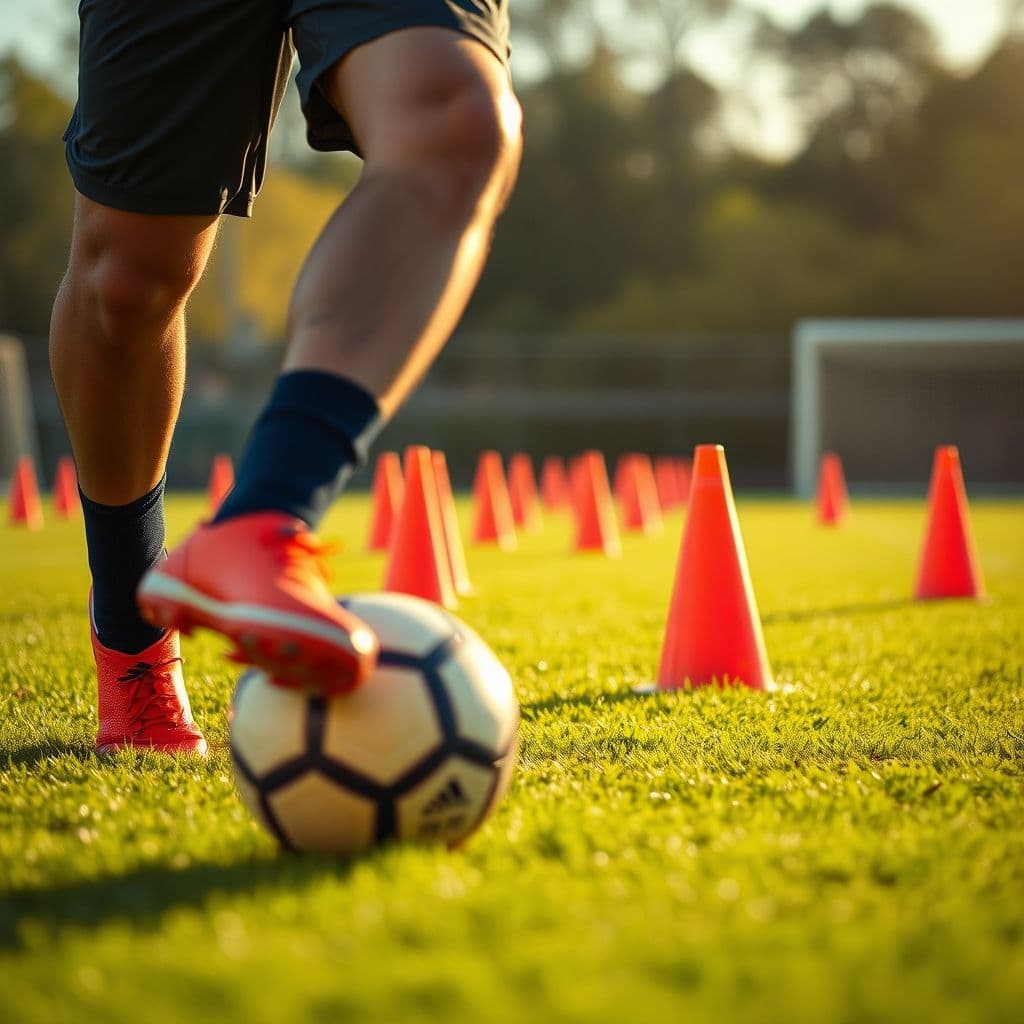Mastering Soccer Skills: A Step-by-Step Guide to Becoming a Better Player

Soccer, or football as it's known in many parts of the world, is a sport that combines physical fitness, technical skills, and tactical awareness. Whether you're a beginner or an experienced player, mastering soccer skills requires dedication, practice, and a solid understanding of the game's fundamentals. This guide will take you through each step of becoming a better soccer player, from learning the basics to refining advanced techniques. Let's kick off your journey to soccer excellence! View original learning path
Step 1: Understanding the Basics of Soccer
Before you can excel in soccer, you need to understand its core elements. The field layout includes key areas like the penalty box, midfield, and goal lines. Familiarize yourself with basic rules such as offside, fouls, and how the game is scored. Positions in soccer—defenders, midfielders, forwards, and goalkeepers—each have unique responsibilities. Knowing where you fit on the field will help you play more effectively.

Step 2: Developing Physical Fitness
Soccer demands high levels of physical fitness. Endurance training, such as running and interval sprints, will help you maintain energy throughout the game. Strength training, focusing on legs and core, improves your power and stability. Agility drills, like ladder exercises and cone drills, enhance your ability to change direction quickly. A well-rounded fitness routine is essential for peak performance on the field.
Step 3: Mastering Ball Control
Ball control is the foundation of soccer skills. Dribbling techniques, such as using the inside and outside of your foot, allow you to maneuver past opponents. Passing skills, including short passes and long balls, are crucial for team play. Receiving the ball effectively—whether with your feet, chest, or head—ensures you maintain possession. Practice these skills daily to build confidence and precision.

Step 4: Improving Tactical Awareness
Tactical awareness separates good players from great ones. Understanding formations, like 4-4-2 or 4-3-3, helps you adapt to different game strategies. Reading the game involves anticipating opponents' moves and making quick decisions. Positioning and movement off the ball are just as important as when you have possession. Watch professional matches to learn how top players navigate the field tactically.
Step 5: Practicing Shooting Techniques
Scoring goals requires mastering different types of shots. Practice instep drives for power, side-foot shots for accuracy, and volleys for airborne balls. Shooting accuracy can be improved by targeting specific areas of the goal during practice. Finishing under pressure—such as in one-on-one situations with the goalkeeper—is a skill that comes with repetition and composure.
Step 6: Enhancing Defensive Skills
Defense is just as important as offense in soccer. Tackling techniques, like the block tackle and slide tackle, should be timed perfectly to avoid fouls. Marking opponents closely prevents them from receiving passes. Interceptions require anticipation and quick reflexes. A strong defender can change the course of a game by shutting down opposing attacks.
Step 7: Participating in Team Play
Soccer is a team sport, and communication is key. Talk to your teammates to coordinate plays and alert them to opponents. Understanding team dynamics means knowing each player's strengths and how to support them. Playing in matches, whether friendly or competitive, helps you apply your skills in real-game scenarios. Team chemistry often makes the difference between winning and losing.

Step 8: Analyzing Performance
Self-assessment helps you identify areas for improvement. Reflect on your performance after each game or practice. Feedback from coaches provides professional insights into your strengths and weaknesses. Video analysis allows you to review your movements, decisions, and techniques objectively. Continuous evaluation is essential for growth as a player.
Step 9: Continuing Skill Development
Soccer is a constantly evolving sport. Advanced drills, such as combination plays and situational exercises, challenge you to refine your skills. Participating in competitive matches tests your abilities under pressure. Staying updated with soccer trends, like new tactics or training methods, keeps your game fresh and innovative. The journey to mastery never truly ends.
Conclusion
Mastering soccer skills is a rewarding journey that combines physical fitness, technical prowess, and tactical intelligence. By following these steps—from understanding the basics to continuously improving—you'll become a more confident and capable player. Remember, consistency and passion are your greatest allies on the path to soccer excellence.
Frequently Asked Questions
- How long does it take to master soccer skills?
- Mastering soccer skills is a lifelong journey. While basic skills can be learned in a few months, advanced techniques and tactical awareness take years of consistent practice and game experience.
- What are common mistakes beginners make?
- Beginners often focus too much on dribbling and neglect passing or defensive skills. Another common mistake is not practicing with both feet, which limits versatility on the field.
- How can I improve my shooting accuracy?
- Practice shooting at specific targets in the goal, use proper technique (plant foot, striking the ball with the correct part of your foot), and maintain focus under pressure. Repetition is key to building muscle memory.





